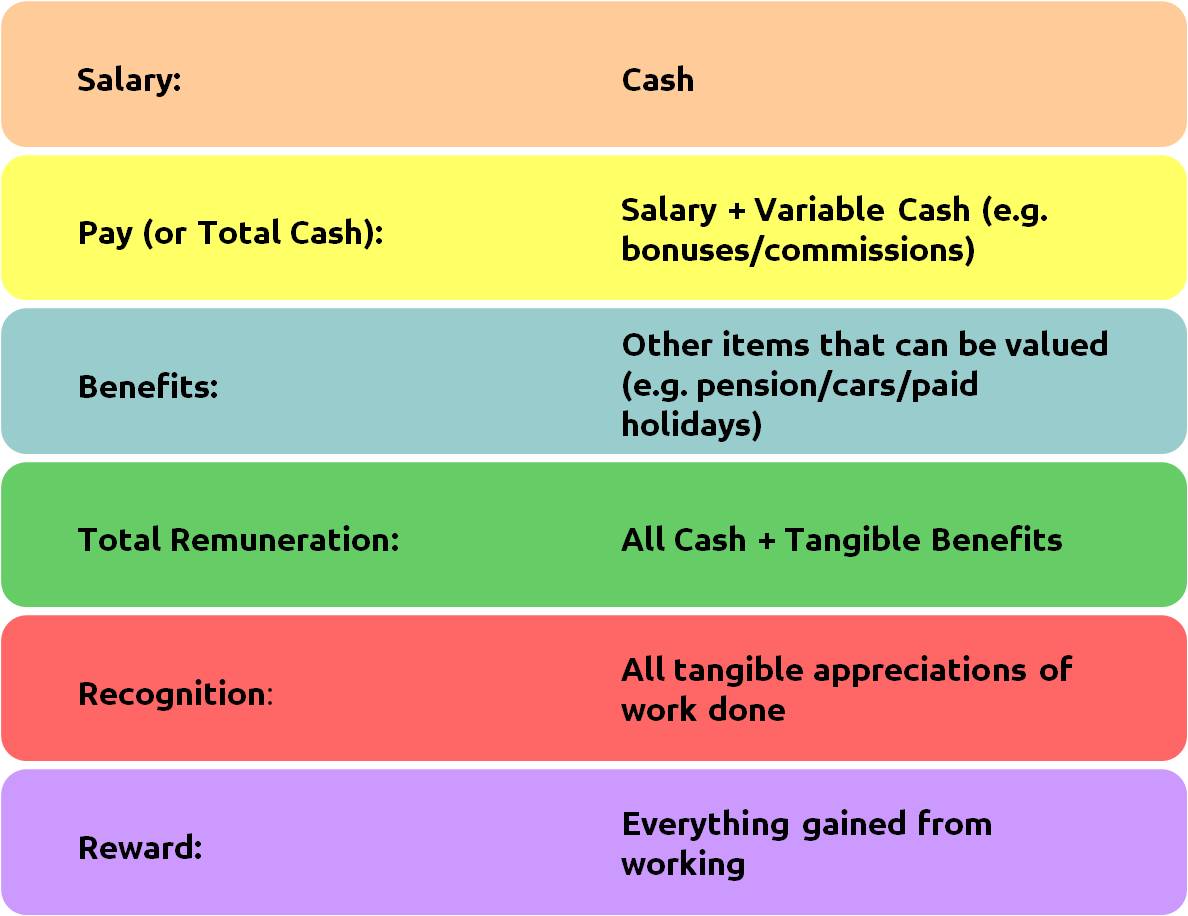Pay is many employers’ biggest expense and for employees it is the main reason why they go to work. The language of pay can get confusing and we have explained the main terms below:

When seeking equal pay, what you are actually looking for is equal remuneration.
How does an employer decide what to pay me?
Apart from minimum wage legislation, there is very little an employer must do. Your pay is most likely a combination of the following:
- Job size
- Size of individual contribution
- “Market rates”
- Internal pay structures
Job size
“Bigger” jobs are usually paid more. This is because there needs to be a greater incentive for someone to take on more responsibility. Equal pay law would deem this a job of greater value.
Unfortunately there are no hard and fast rules to deciding on the value of a job. Job sizing is usually decided by:
- Managerial guesswork or judgement.
- Matching job content or grade descriptors through a formal or informal process.
- Formal or informal job evaluation
Managerial judgement can often be challenged if women’s work has been undervalued (likely as these decisions are more often made by men). The formal or informal process taken by an employer must be fair and compliant. If it isn’t then the judgements can be challenged on the grounds of fairness.
Market rate
You might have heard the term “the going rate” which is another way or saying market rate. Unfortunately the pay market is very distorted and inefficient.
These questions will be thought about by companies when deciding their market rate. They either:
- Judge what it may take to recruit someone or simply guess.
- Look at similar job adverts, talk to recruiters or examine what the candidate was previously paid.
- Use a more formal process (called benchmarking) to decide pay.
Market rate is not a fool proof method of deciding pay. There are many factors which can distort the results. There must be evidence if pay differences are put down to market rate. Depending on your employer’s situation it may be possible to challenge the structure.